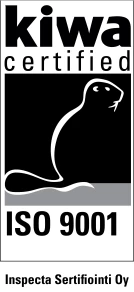Instructions for drawing up a business plan
When you are planning to set up your own business and you already have a business idea in mind, you can continue planning your business with the help of LISSU, a business plan program.
This page is a step-by-step guide for filling out your business plan and what you should especially consider at each point.

LISSU program has been developed to suit customers' needs, and it helps you to go through and consider all necessary aspects. By filling out the business plan, you refine your business idea. The business plan helps you to outline what you are actually doing, and then, it is easier to explain that to someone else as well. The business plan is a tool that is primarily meant just for you, but it is also a tool for funding and start-up grant applications.
This page is a step-by-step guide for filling out your business plan and what you should especially consider at each point.
Quick instructions for using LISSU
- Meet a business advisor who gives you the credentials for using LISSU OR get the credentials yourself here.
- Fill out your personal information.
- Create a business plan and fill out all sections.
- If necessary, you can request a business advisor to review your business plan.
- Go through the final version of your business plan together with a business advisor.
Business plan sections
The business plan consists of eight sections, which are divided into different sub-sections. Click on the section you would like to read more about.
Business idea, your reasons for establishing a business
- First, you need to write down the basic information, i.e. the business idea and the reason(s) for establishing a business.
- The description of the business idea needs to be quite short – even just one word can be enough, such as "pizzeria".
- You can also think of describing your business idea as some sort of a slogan that captures the basic idea of your business, such as "a pizzabuffet for the whole family".
- You can have plenty of reasons for establishing your own business, but the most common reason is most likely that the person considering to start a business has seen that there is demand for the business idea. The business idea can, for example, solve a problem.
- In any case, it is important that the business idea and the reasons for establishing a business are clear to yourself, and writing them down to the business plan helps you clarify your business idea.
Description of business idea, customer benefits of products and services, developing products and services
- This section includes descriptions, customer benefits and development plans regarding products and services.
- In this section, you will describe your business idea more in detail. If you're planning to start up a pizzeria, for example, you can clarify whether it is a buffet or a catering restaurant, does the restaurant serve only vegetarian food, does it offer home delivery, etc.
- Customer benefits: why and how will your customers benefit from your products and services? If it doesn't benefit the customer, the customer won't buy it.
- A customer benefit can also be something quite simple. For example, the customer benefit of a restaurant or a building company could be the fact that by using their services, the customer has more free time to themselves.
- You should also write down your thoughts about developing your products or services. Even if it was more profitable to concentrate on your core competence when starting your own business, you should also think about how you are going to proceed in the future.
Customers, market, competitive situation and your competitive advantage, future prospects, demand
- This section focuses on your customers, market, competitive situation, competitive advantage, future prospects and demand.
- The customer is the basis for your business, since you will get money only from your customers.
- It is important to be aware of who your clients are, how they behave and what media they use, since the customer is the basis for all your sales and marketing. It is hard to sell and market your products or services if you don't know who you are selling them to.
- In terms of market, you should consider your own market area. Are you going to operate only in the Vaasa region or Ostrobothnia, or are you planning to operate in the whole country or enter the international market?
- The decision about your market area affects many things, such as marketing, logistics and sales chains.
- It is essential that you know who your competitors are and what your competitive advantages are compared to them. A competitive advantage is closely related to customer benefits, i. e. the added value that the customer will get from your product or service. Why does the customer need the product or service?
- Even though you cannot foresee the future, you should always have an eye to the future. How will you take into account the changes occurring in your operational environment when you are developing your business activities?
Marketing methods, advertising and sales promotion
- The fourth section focuses on the sales and marketing plan. In this section, you will write down your marketing methods and information about advertising and sales promotion.
- It is important to consider these already when establishing your business, since these will bring customers to your business. Reaching customers and visibility are vital to every business.
- It is useful to draw up a marketing plan for the first six months when filling out your business plan, and for the calculations, it is useful to find out the expenses related to marketing and sales.
- You should invest in marketing and sales right from the start, since they will help you in customer acquisition.
- It is also not insignificant how you are selling and marketing your products and services. Sometimes it might be a good idea to start a campaign, and you can also consult marketing and sales experts (e.g. Startia's network of experts).
Location, opening hours and time management, distribution channels / delivery methods, risk management
- This section focuses on matters related to your place of business, premises and production. You will write down the location of your business and its pros and cons as well as opening hours and time management matters.
- You should consider already in the beginning how your business will operate while you are on holiday or sick leave.
- If you are going to use subcontractors, write them down in the business plan. Are you going to do everything by yourself or will you use subcontractors for some parts of your business operations?
- Subcontractors are also part of your network, and sometimes even a competitor can be a partner. You don't always have to do everything by yourself – sometimes it might be more profitable to utilize another business's services.
- In this section, you will also concentrate on risk management, such as matters regarding contracts, protection, IPR, guarantee and insurance.
- Write down also what kind of software or applications you'll need for your business (e.g. webshop, crm, google analytics, e-invoicing/bookkeeping program)?
Company form and organisation, workforce, skills and training needs, CV, your own network and expert
- The sixth section focuses on your company's management and organisation structure. In this section, you will write down information about the company form, the people working in the organisation and shares of ownership.
- If the company has multiple owners, you should write in the business plan how the responsibilities and duties are shared among the owners. The partnership agreement is an important document, if the company has multiple owners.
- Information about workforce, skills and training needs of both the entrepreneur and the employees are also part of the business plan.
- You should utilize all of your own work experience and education as much as possible, but if there are gaps in education or competences, you should consider if it is more profitable to e.g. use subcontractors or hire an employee to fill these gaps.
- Your network and experts also have a role to play throughout your business's life cycle. These will be considered in this section as well. It is profitable to continuously expand your network, and your network does not only consist of people you know through your business but also of your personal contacts.
Strengths, weaknesses, opportunities, threats
- The second last section includes a SWOT analysis, which means analysing strengths, weaknesses, opportunities and threats.
- How can you improve the strengths of the business and business idea, and how can you diminish weaknesses?
- What opportunities do you see in the development of your business idea, and how can you reduce or avoid threats?
Bookkeeping, performance monitoring, purchasing, warehousing, pricing, investments, financing, calculations
- This section is all about economic forecasts: bookkeeping, financing, pricing, investments.
- A bookkeeper is one of an entrepreneur's most important partners. If you outsource bookkeeping, you can concentrate on your own core competences.
- When thinking about investments, it is important to consider how much money you need so that you can open up the business and start your operations. Where will you get financing?
- You need to be careful with pricing so that your business operations are profitable. Expenses as well as the competitors' prices affect your pricing.
- This section also includes calculations: investment calculation, examining your business idea on the basis of your budget, profitability calculation and cash flow analysis.
- The calculations might look intimidating at first glance, but our business advisors will help you with filling them out, if necessary.

Director of Startia
Tommi Virkama
- New entrepreneurs
Tips and instructions for entrepreneurs







